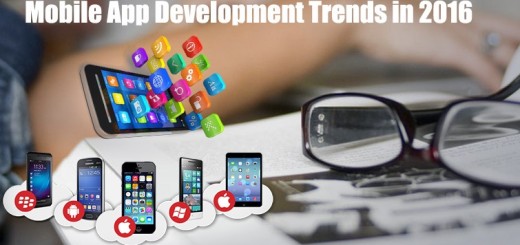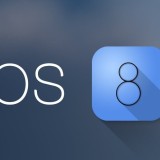If you are a coder already, you have an advantage over those who have no past with programming. But that doesn’t mean that you just have to learn how code syntax works in Android development. That’s far from enough. You need to learn about the whole range of resources, approach and support that Android developer’s guidelines have to offer.
These details would help you get started with building beautiful Android apps:
First things first! Reconsidering that you are starting from zero and have no experience with coding or simply all your skills with coding have faded away for that matter. With that being a case, you have to check things here first before you actually move ahead for the kill.
Okay, now let’s talk about the actual development. See, this is far beyond what you learn while coding. It is not just about syntax and theoretical knowledge for that matter but the real application. This has to do with coding experiences, environment, tools and the guidelines that provide you the podium to work, analyze, diagnose and dig into numerous aspects of development before your reach into a real-performing thing.
Here we go:
The Android Software Development Kit
This is the spine of Android development. Putting it simple, everything you need to develop an Android app with is available here in the form of tool. It is the collection of working environments where you do all your stuff to bring up the application and put together different resources in a comprehensive Android-powered environment. The kit includes an array of helpful tools that go along developing an extended application based on different choices and aspects of developing an Android application.
IDEs (integrated development environments)
An IDE is an integral part of any SDK you use for development. It is primarily the virtual workshop where all that you need to work on can be reached and interacted with. It has all the supporting libraries, package manager and files for you to get help in developing your application. There are two major Android IDEs that you get to work with, Eclipse and Android Studio. As per now, the default IDE for Android is Eclipse. It has been the first choice among developers as it allows modifying Java and XML files, allowing different tasks to be done at sheer ease. Android Studio is the top contender alongside Eclipse. Google has plans to launch it as the mainstream IDE for Android development once it is through with the delayed beta phase.
However, whatever be your choice here, you get to work on a lot of new things and amazing facilities which is where you actually learn things and get sharper at Android development. All you need to do is pick those basics well, just like you do with any other program like Photoshop.
Tutorials
There are several tutorials and resources to teach you Android development. Most of them are lengthy and detailed. You are not a tutor, so avoid mugging up theory. Here are some of the selected tutorials that are best for you to quickly get hold of things in least time:
Udacity – Developing Android App: You get trained here by Google experts online, for 8 weeks. Here you will come across various real scenarios and get close with core concepts of programming for Android devices. Best for learning the practicality of Android Development!
Android Developer Training: It is a part of Google Documentation. You are taken through the fundamentals of on how to use tools, what to do with resources and how to club facilities together to get the best results in least time. The best part is, everything is based on situational logics and are explained in really easy manner.
Vogella: It is just about everything Android development is for. It allows you the extensive resources to learn about everything in most pithy way possible, so you get to cover everything left out in the tutorials above.
Well, ADB is about core development. It is included in the Android SDK to be used to make changes to your devices or load software. Here are the basic tools that you can use with ADB to extend hands to smooth development for your Android app.
Now you have good amount of material to help you with taking up almost every task in Android development. Still to get more confident with your approach and make the most out of it in the first go you can get helped with these guidelines:
Google Services: This will let you seep through the details on Google services in case you are working on a broad application that needs to be built on expansive features and functionalities. This will not only allow you to work on map and location features yourself but also control various resources from cloud back-ups, sign-in services and more most easily.
API Guides: Google services are different from the regular ones. The API guides would let you know how they are different and how to use them correctly. This includes every information ranging from basic animations to reading sensors and connecting to the internet.
Sample Code: It is highly useful when you feel the need to refer to some work already done on a similar module. This would be a great way to see your things working without having to go too hard experimenting and reinventing different functions.
This is all about making all that you have developed so far look nice. These guidelines focus on instructions like how to place a certain animation and where to put button and how to balance whitespace in your layout. Google is working continuously on making the visual interface scheming better so that Android experts get more of ‘weathered inputs’ for their design. The most important areas covered are:
Devices: There are not just the phones but many more devices that run on Android. This section from the Android Design Guidelines would let you know how to go about the design that supports them all and responds to the design requirements all these devices have.
Patterns: In this section, you would be able to learn how app works on structured interfaces and how to approach the design and get the right pattern across the length.
Material Design Documentation: For now, it is a separate segment but Google is planning to put it as an integral part of Android design conventions, introducing it as a new design language. In this documentation, you will be able to learn to design apps that fit these guidelines.
Conclusion
The more you learn about Android application development before you try your hands on it the better it gets in proving successful for your idea. Developing beautiful applications for Android must take some time as you tune-in with the entire facility and gear-up with possibilities to make it happen. You are not the only one to go down this road, so better relax and rip it off going all prepared with the right roadmap with you!
Image courtesy: android-developers.blogspot.com


















